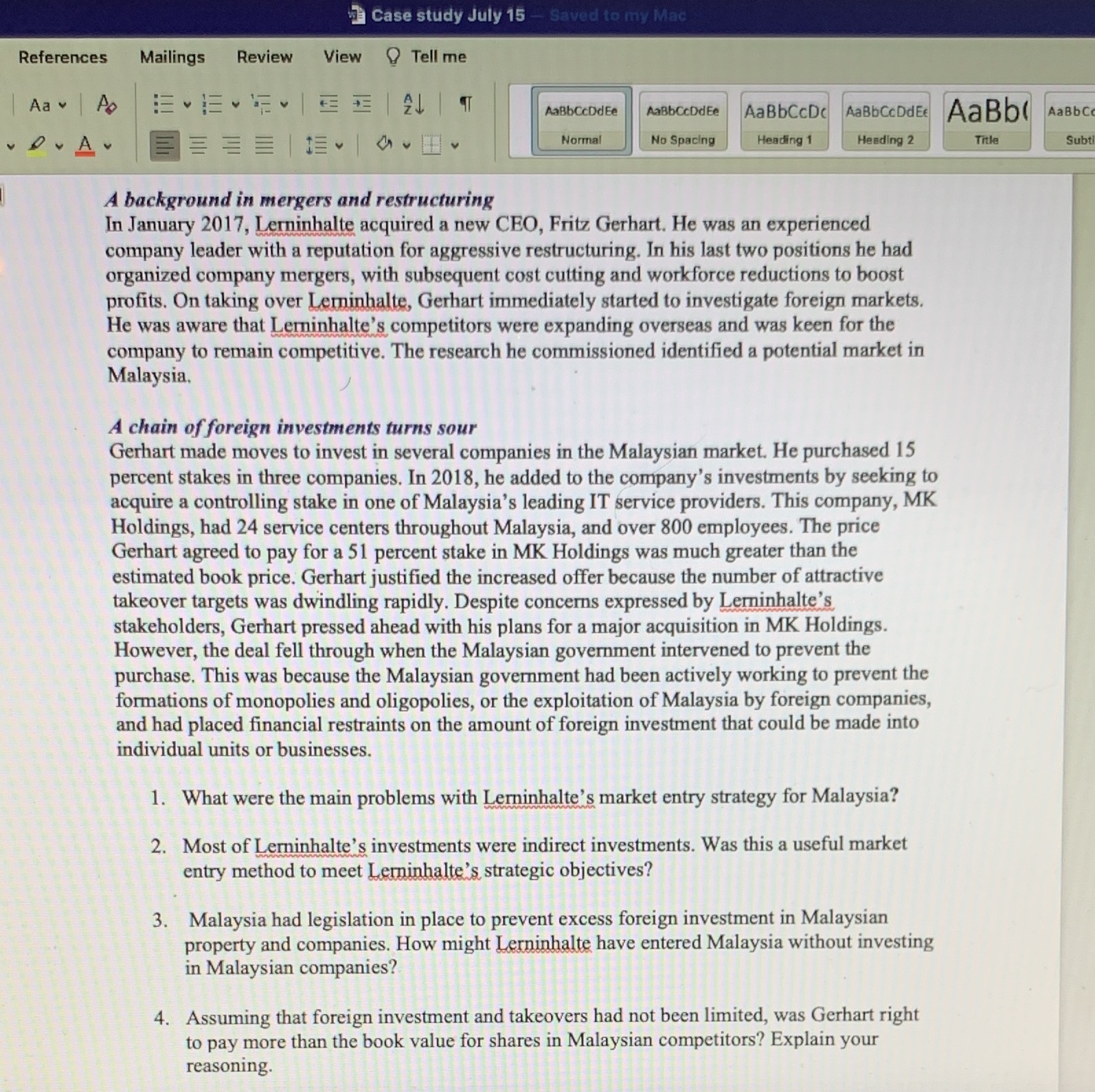Case study July 15 - Saved to my Mac References Mailings Review View Tell me Aav AD AaBbCCDdEe AaBbCcDdEe AaBbCcDC AaBbCcDdEE AaBb( AaBbC DV Av Normal No Spacing Heading 1 Heeding 2 Title Sub A background in mergers and restructuring In January 2017, Lerninhalte acquired a new CEO, Fritz Gerhart. He was an experienced company leader with a reputation for aggressive restructuring. In his last two positions he had organized company mergers, with subsequent cost cutting and workforce reductions to boost profits. On taking over Leminhalte, Gerhart immediately started to investigate foreign markets. He was aware that Leminhalte's competitors were expanding overseas and was keen for the company to remain competitive. The research he commissioned identified a potential market in Malaysia. A chain of foreign investments turns sour Gerhart made moves to invest in several companies in the Malaysian market. He purchased 15 percent stakes in three companies. In 2018, he added to the company's investments by seeking to acquire a controlling stake in one of Malaysia's leading IT service providers. This company, MK Holdings, had 24 service centers throughout Malaysia, and over 800 employees. The price Gerhart agreed to pay for a 51 percent stake in MK Holdings was much greater than the estimated book price. Gerhart justified the increased offer because the number of attractive takeover targets was dwindling rapidly. Despite concerns expressed by Leminhalte's stakeholders, Gerhart pressed ahead with his plans for a major acquisition in MK Holdings. However, the deal fell through when the Malaysian government intervened to prevent the purchase. This was because the Malaysian government had been actively working to prevent the formations of monopolies and oligopolies, or the exploitation of Malaysia by foreign companies, and had placed financial restraints on the amount of foreign investment that could be made into individual units or businesses. 1. What were the main problems with Lerninhalte's market entry strategy for Malaysia? 2. Most of Leminhalte's investments were indirect investments. Was this a useful market entry method to meet Leminhalte's strategic objectives? 3. Malaysia had legislation in place to prevent excess foreign investment in Malaysian property and companies. How might Lerninhalte have entered Malaysia without investing in Malaysian companies? 4. Assuming that foreign investment and takeovers had not been limited, was Gerhart right to pay more than the book value for shares in Malaysian competitors? Explain your reasoning







